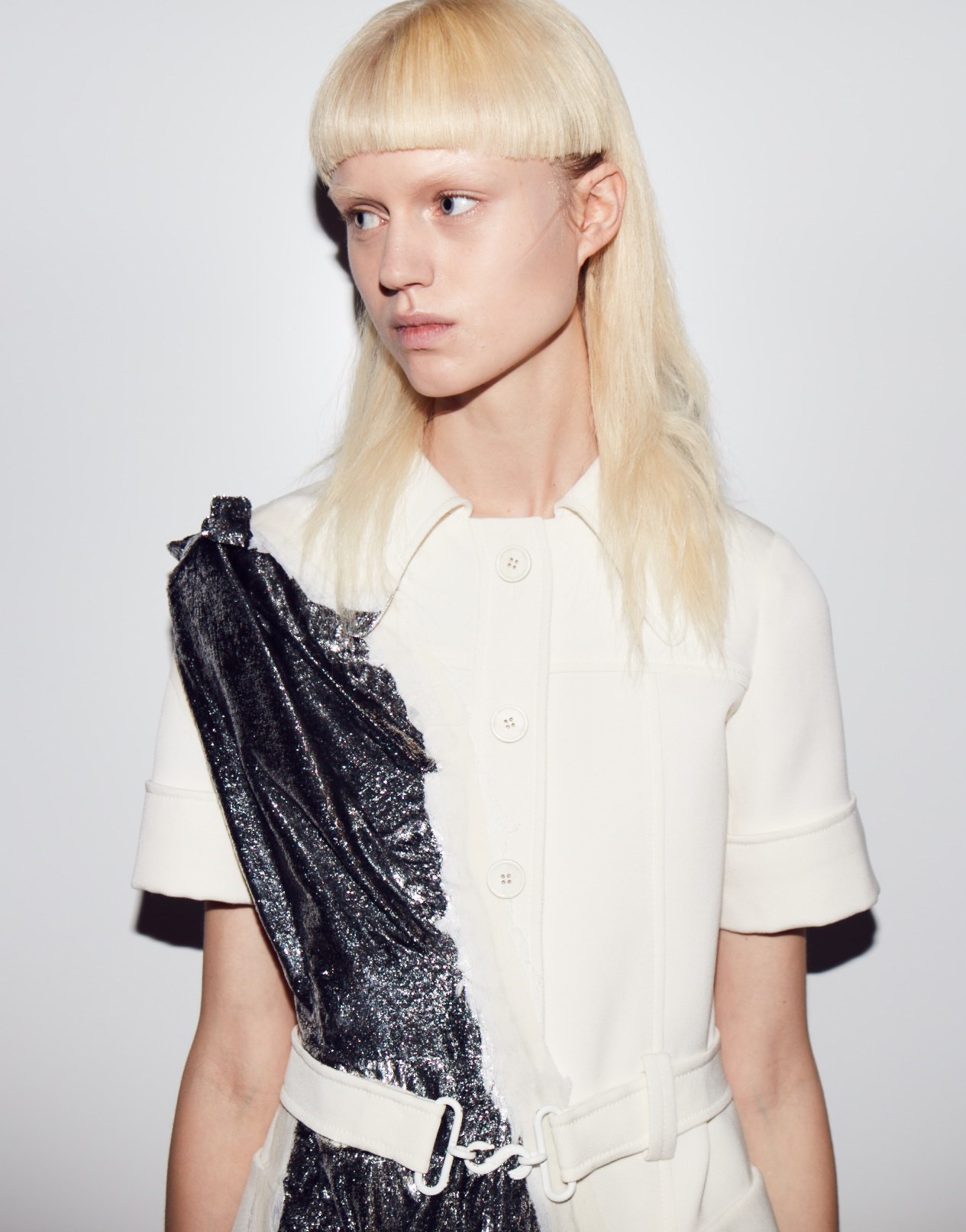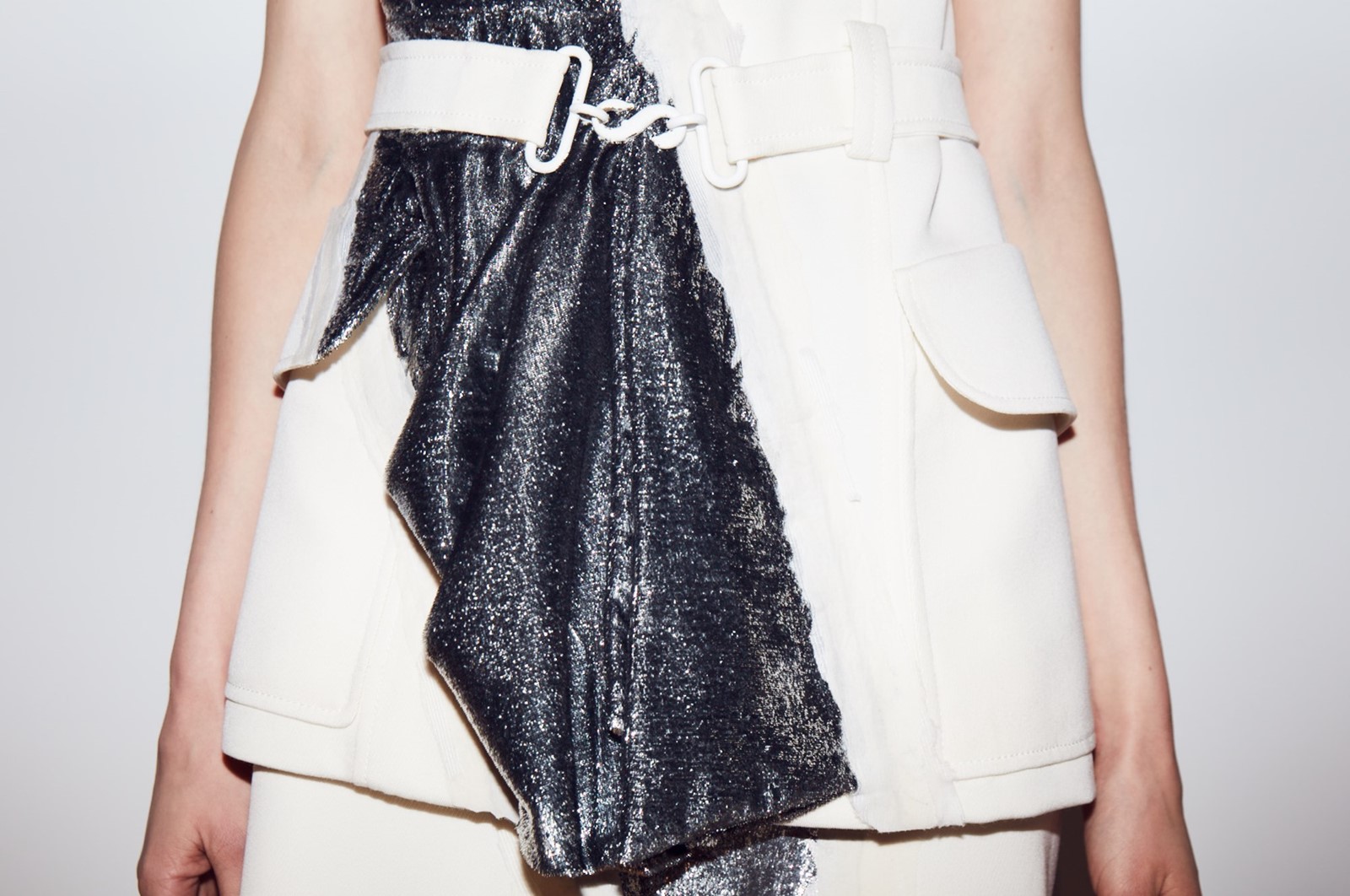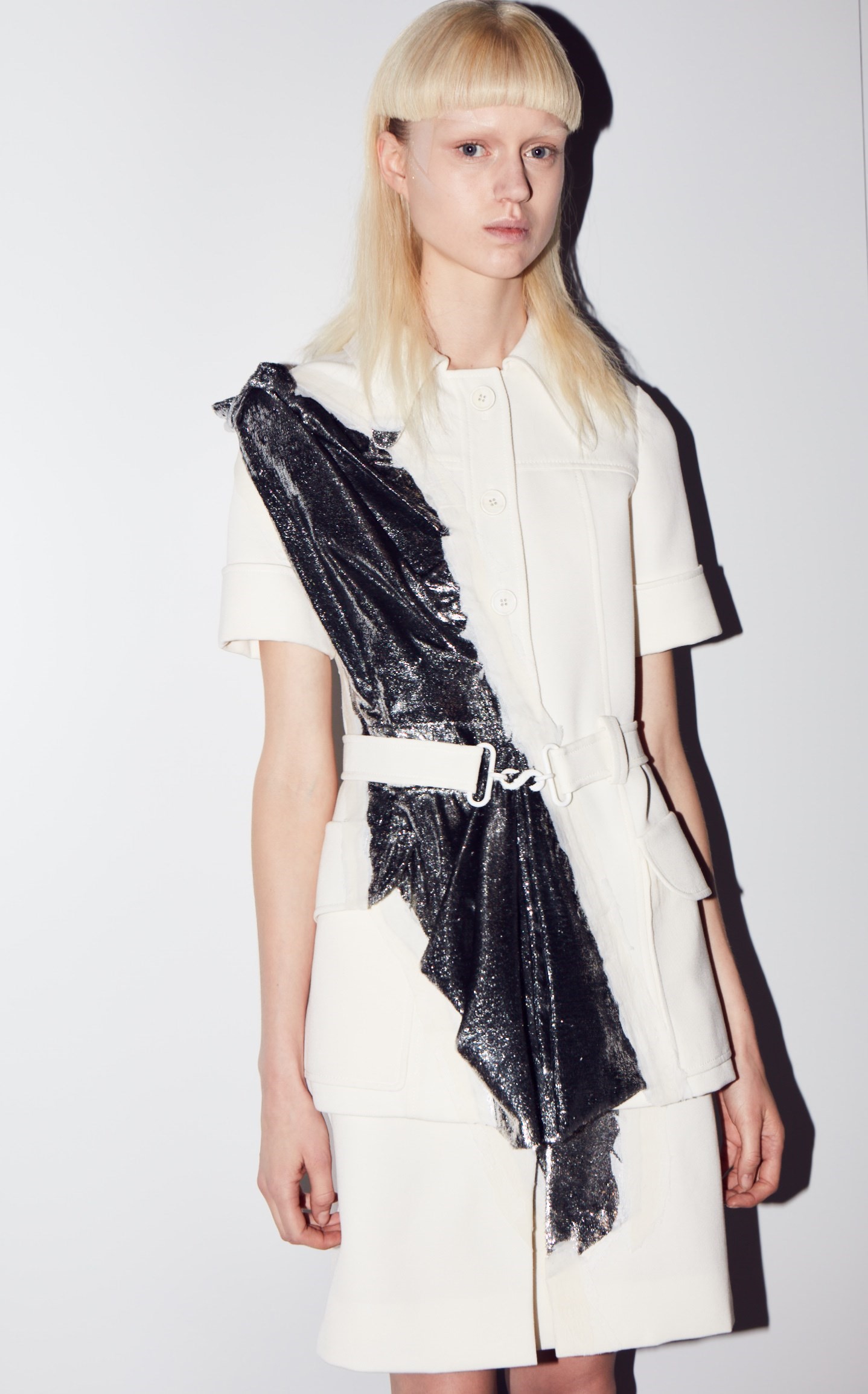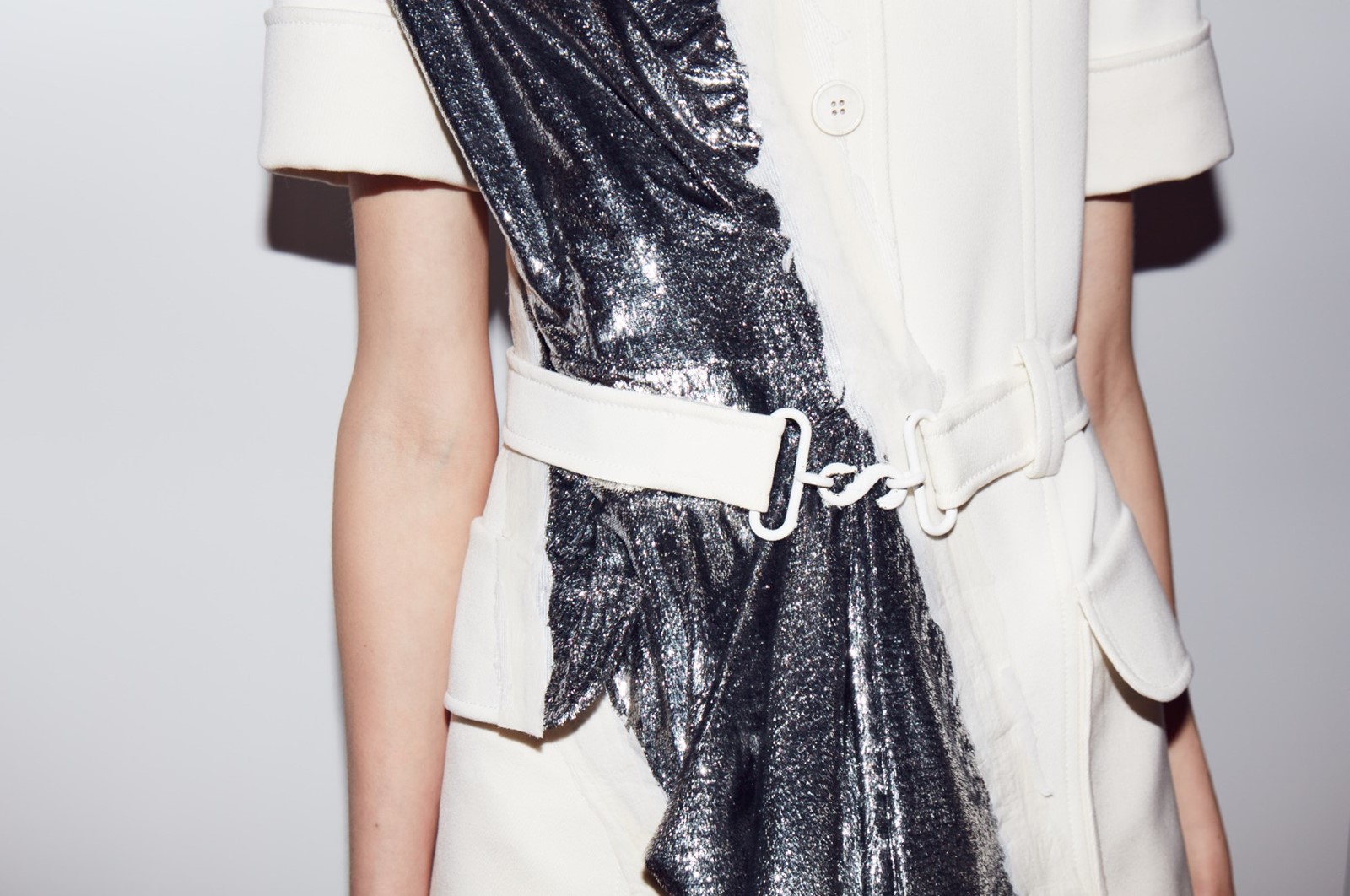Since the late 1980s and the early days of Maison Margiela, the reinvention of found garments, deconstructed then reconstructed, has been at the heart of an aesthetic that is among the most influential in fashion. Martin Margiela himself once transformed a leather butcher’s apron into a dress; he took apart an antique wedding gown and recast it as a sequence of jackets, to name just two examples. A respect for the past and the emotional resonance that comes with aged clothing continued to feed the imagination of the house’s namesake designer until his retirement in 2009.
As the success of the label increased, it became impossible, for obvious reasons, to produce such pieces in sufficient volume: the ready-to-wear may sporadically have appeared deliberately dusty, but both fabric and clothes were new. Until, in 2006, the Maison Martin Margiela Artisanal collection was born. At that point, the design team travelled the world in search of antique pieces from the 1800s to the present – from Edwardian lace to original Bauhaus designs and from battered blue jeans to old lining silks – and with great skill and the luxury of time at their fingertips transformed them into something else, all by hand. A tunic was made out of interlinked cheap faux gold rings – the sort generally to be found at the fairground, worn brown leather belts were collected and sewn together to become a pair of trousers, rare embroideries were applied to humble fabrics including calico and denim… Clothes were turned upside down, inside out – taken apart at the seams.
“The look started as a paper collage on an evening dress ripped and pieced onto a tailored suit which we then re-created three-dimensionally” – Maison Margiela
Both the scarcity of the materials in question and the craftsmanship that went into the creation of this biannual collection naturally limited production and increased the expense of garments and, for that reason, the Artisanal was shown during the Paris haute couture season. However, while Martin Margiela was at the helm he always insisted it was not an haute couture collection, despite the fact that the Chambre Syndicale de la Haute Couture Parisienne invited the house he founded onto that rarefied schedule. Certainly, there was a modesty to the work and the way it was presented that is not often associated with the métier. Neither were pieces as expensive as those crafted by the petites mains who staff Paris’s larger and more obviously grand houses. Such things are relative: they still regularly reached five figures.
With the arrival of John Galliano as artistic director of Maison Margiela one year ago now, the goalposts moved once again. This designer created blockbuster (read: not even remotely modest) haute couture collections for Christian Dior for more than 15 years, after all. Today, then, Maison Margiela Artisanal comprises clothing of his design in fabrics especially commissioned by the studio. A sense of history, soulfulness, invention and reinvention remains, though: that has always been part of Galliano’s vocabulary.
Even in one apparently simple look from the Spring/Summer 2016 collection the layers of referencing and knowledge of the past begs deconstruction in its own right. This, the third exit, marks the early stages of a presentation that opened stripped back to the point of purity and became increasingly elaborate building to an ornamental climax. "The look started as a paper collage on an evening dress ripped and pieced onto a tailored suit which we then re-created three-dimensionally," state the creative powers that be at the house, who have always responded to any questions as the collective 'we'. "The challenge was fusing the two elements together to read as one item, keeping the recognisable identity of a Fifties couture dress yet retaining a language of collaged abstraction. The look was achieved by multiple fittings gradually layering the two pieces together."

White Out
The colour white – or ‘whites’ in Margiela speak – is the most well-known and firmly established of the house’s signatures. The staff at the atelier wear the white chemises which are normally the preserve of seamstresses and models in fittings, and they are responsible for painting and re-painting their own desks white, meaning that no two ever look the same. Walls, floors and ceilings at Margiela’s Paris headquarters in the 11th arrondissement are whitewashed and, of course, the MM label itself is white: four large white stitches, one at each corner, hold it in place. This collection’s shades of the non-colour – which more than any other is open to variation over time, and to the effect of light – are referred to, quite beautifully, as "paper whites". This wool silk cavalry twill skirt suit is white, or perhaps ivory. The silver (or metallic white?) lamé velvet detail marks the beginning of the aforementioned collage motif that develops throughout the collection. It also represents a play between the utilitarian and the decorative, the apparently humble and the haute. Finally, the fastening of the snake belt is more of an optic white.

Who's Referencing Who?
Ah, the snake belt. This classic accessory first made it onto the haute couture catwalk courtesy of Yves Saint Laurent who placed a jewelled version beneath a sheer chiffon dress with a marabou feathered skirt for his Spring/Summer 1968 haute couture collection. That same year, Saint Laurent also appropriated the masculine safari jacket and re-proportioned it to fit his female clientele. The patch pockets here are a nod to that. So, Galliano references Saint Laurent through the eyes of Maison Margiela: three apparently disparate – and huge – fashion talents collide. Galliano also references his own archive. The scaled up looks he presented for Dior and for his signature collection in the early Noughties are revisited: supersized trousers are worn as a jacket, an oversized polyamide bomber explodes with more lamé from behind. Interestingly, Martin Margiela also played with larger-than-lifesize proportions. Most memorably, for Autumn/Winter 2000 he produced an entire women’s wear collection in a fictional man’s Italian 78. The question of memory is central to the fashion discourse right now and it comes to the fore in the most accomplished of hands here. Or, as the show notes put it: "The multiple lives of a garment are unveiled, encrusted upon one another".

A Study of Character
John Galliano has always dreamt up narratives cast with women – and later men – bearing characters as diverse as Blanche Dubois and the Marquesa Luisa Casati, as Cleopatra and Siouxsie Sioux in mind. For his signature collection in particular no model wore more than one outfit and no two hair and make-up looks were ever the same. This thought process is also central to haute couture more broadly, however. Where ready-to-wear collections reflect a certain mood, for haute couture each piece is a separate entity. It is precisely its difference that makes it special: unique. For the Maison Margiela Artisanal Spring/Summer 2016 collection, girls variously had faces embellished with glittering ruby lips, shaded by a tangle of lilac tendrils or, as seen here, nude to the point almost of alien – whited out, if you will. Wigs are also an integral part of Maison Margiela’s handwriting. During Martin Margiela’s time at the house they came variously crafted in fur, or with fringes so long they obscured models’ features, masking them to ensure the attention was focused on the clothes – in the absence of masks themselves that is.
